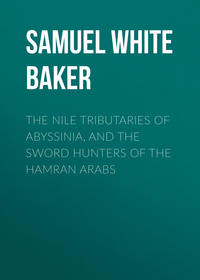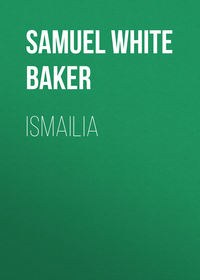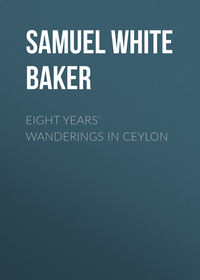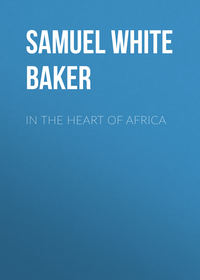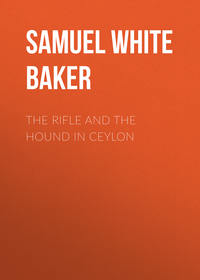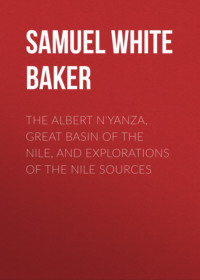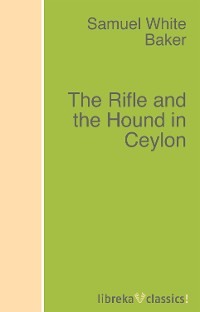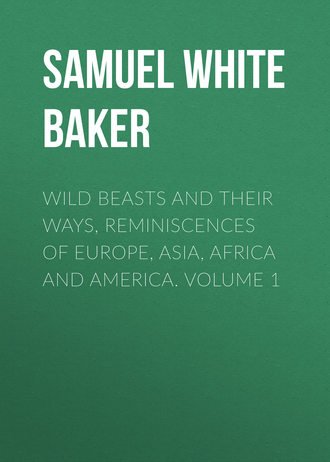 полная версия
полная версияWild Beasts and Their Ways, Reminiscences of Europe, Asia, Africa and America. Volume 1
We should therefore endeavour to prevent the bullet from passing through an animal, if it is necessary to concentrate the full power of the projectile upon the resisting body.
This is one reason adduced in favour of the hollow Express bullet, which smashes up into minute films of lead when it strikes the hard muscles of an animal, owing to its extreme velocity, and the weakness of its parts through the hollowness of its centre.
I contend, on the contrary, that the bullet has committed suicide by destroying itself, although its fragments may have fatally torn and injured the vital organs of the wounded animal. The bullet has ceased to exist, as it is broken into fifty shreds; therefore it is dead, as it is no longer a compact body,—in fact, it has disappeared, although the actual striking energy of a very inferior bullet may have been expended upon the animal.
If the animal is small and harmless, this should be the desired result. If, on the other hand, the animal should be large and dangerous, there cannot be a greater mistake than the hollow Express projectile.
I have frequently heard persons of great experience dilate with satisfaction upon the good shots made with their little '450 hollow Express exactly behind the shoulder of a tiger or some other animal. I have also heard of their failures, which were to themselves sometimes incomprehensible. A solid Express '577 NEVER fails if the direction is accurate towards a vital part. The position of the animal does not signify; if the hunter has a knowledge of comparative anatomy (which he must have, to be a thoroughly successful shot) he can make positively certain of his game at a short distance, as the solid bullet will crash through muscle, bone, and every opposing obstacle to reach the fatal organ. If the animal be a tiger, lion, bear, or leopard, the bullet should have the power to penetrate, but it should not pass completely through. If it should be a wapiti, or sambur stag, the bullet should also remain within, retained in all cases under the skin upon the side opposite to that of entrance. How is this to be managed by the same rifle burning the same charge of powder with a solid bullet?
The penetration must be arranged by varying the material of the bullet. A certain number of cartridges should be loaded with bullets of extreme hardness, intended specially for large thick-skinned animals; other bullets should be composed of softer metal, which would expand upon the resisting muscles but would not pass completely through the skin upon the opposite side. The cartridges would be coloured for distinction.
If the metal is pure lead, the bullet '577, with an initial velocity of 1650 feet per second, will assuredly assume the form of a button mushroom immediately upon impact, and it will increase in diameter as it meets with resistance upon its course until, when expended beneath the elastic hide upon the opposite side, it will have become fully spread like a mature mushroom, instead of the button shape that it had assumed on entrance. I prefer pure lead for tigers, lions, sambur deer, wapiti, and such large animals which are not thick-skinned, as the bullet alters its form and nevertheless remains intact, the striking energy being concentrated within the body.
The difference in the striking energy of a hollow bullet from that of a solid projectile is enormous, owing to the inequality in weight. The hollow bullet wounds mortally, but it does not always kill neatly. I have seen very many instances where the '500 hollow Express with 5 drams of powder has struck an animal well behind the shoulder, or sometimes through the shoulder, and notwithstanding the fatal wound, the beast has galloped off as though untouched, for at least a hundred yards, before it fell suddenly, and died.
This is clumsy shooting. The solid bullet of pure lead would have killed upon the spot, as the bullet would have retained its substance although it altered its form, and the shock would have been more severe, The hollow bullet exhibits a peculiar result in a post-mortem examination: the lungs may be hopelessly torn and ragged, the liver and the heart may be also damaged, all by the same projectile, because it has been converted into small shot immediately upon impact. Frequently a minute hole will be observed upon the entrance, and within an inch beneath the skin a large aperture will be seen where an explosion appears to have taken place by the breaking-up of the lead, all of which has splashed into fragments scattering in every direction.
Common sense will suggest that although such a bullet will kill, it is not the sort of weapon to stop a dangerous animal when in full charge. Weak men generally prefer the hollow Express because the rifle is lighter and handier than the more formidable weapon, and the recoil is not so severe, owing to the lightness of the bullet.
My opinion may be expressed in a few words. If you wish the bullet to expand, use soft lead, but keep the metal solid. If you wish for great penetration, use hard solid metal, either 1/10 tin or 1/13 quicksilver. Even this will alter its form against the bones of a buffalo, but either of the above will go clean through a wapiti stag, and would kill another beyond it should the rifle be '577 fired with 6 drams of powder.
The same rifle will not drive a soft leaden solid bullet through a male tiger if struck directly through the shoulder; it will be found flattened to a mushroom form beneath the skin upon the other side, having performed its duty effectively, by killing the tiger upon the spot, and retaining intact the metal of which it was composed.
A post-mortem inquiry in the latter case would be most satisfactory. If the bullet shall have struck fair upon the shoulder-joint, it will be observed that although it has retained its substance, the momentum has been conveyed to every fragment of crushed bone, which will have been driven forward through the lungs like a charge of buckshot, in addition to the havoc created by the large diameter of an expanded '577 bullet. Both shoulders will have been completely crushed, and the animal must of course be rendered absolutely helpless. This is a sine qua non in all shooting. Do not wound, but kill outright; and this you will generally do with a '577 solid bullet of pure lead, or with a Paradox bullet 1 3/4 ounces hard metal and 4 1/2 drams of powder. This very large bullet is sufficiently formidable to require no expansion.
Gunmakers will not advise the use of pure lead for bullets, as it is apt to foul the barrel by its extreme softness, which leaves a coating of the metal upon the surface of the rifling. For military purposes this objection would hold good, but so few shots are fired at game during the day, that no disadvantage could accrue, and the rifle would of course be cleaned every evening.
The accidents which unfortunately so often happen to the hunters of dangerous game may generally be traced to the defect in the rifles employed. If a shooter wishes to amuse himself in Scotland among the harmless red deer, let him try any experiments that may please him; but if he is a man like so many who leave the shores of Great Britain for the wild jungles of the East, or of Africa, let him at once abjure hollow bullets if he seeks dangerous game. Upon this subject I press my opinion, as I feel the immense responsibility of advice should any calamity occur. It is only a few months since the lamented Mr. Ingram was killed by an elephant in the Somali country, through using a '450 Express hollow bullet against an animal that should at least have been attacked with a No. 10. I submit the question to any admirer of the hollow Express. "If he is on foot, trusting only to his rifle for protection, would he select a hollow Express, no matter whether '577, '500, or '450; or would he prefer a solid bullet to withstand a dangerous charge?"
India is a vast empire, and various portions, according to the conditions of localities, have peculiar customs for the conduct of wild sports. In dense jungles, where it would be impossible to see the game if on foot, there is no other way of obtaining a shot except by driving. The gunners are in such case placed at suitable intervals upon platforms called mucharns, securely fitted between convenient forks among the branches of a tree, about 10 or 12 feet above the ground. From this point of vantage the gunner can see without being seen and, thoroughly protected from all danger, he may amuse himself by comparing the success of his shooting with the hollow Express or with the solid bullet at the animals that pass within his range, which means a limit of about 50 yards. I contend that at the short distance named; a tiger should NEVER escape from a solid bullet; he often escapes from the hollow bullet for several reasons.
It must be remembered that animals are rarely seen distinctly in a thick jungle, countless twigs and foliage intercept the bullet, and the view, although patent to both open eyes, becomes misty and obscure when you shut one eye and squint along the barrel. You then discover that although you can see the dim shadow of your game, your bullet will have to cut its way through at least twenty twigs before it can reach its goal. A solid bullet may deflect slightly, but it will generally deliver its message direct, unless the opposing objects are more formidable than ordinary small branches. A hollow bullet from an Express rifle will fly into fragments should it strike a twig the size of the little finger. This is quite sufficient to condemn the hollow projectile without any further argument.
While writing the above, I have received the Pioneer, 24th June 1888, which gives the following account of an escape from a tiger a few weeks ago by Mr. Cuthbert Fraser, and no better example could be offered to prove the danger of a hollow bullet. It will be seen that a solid bullet would have killed the tiger on the spot, as it would have penetrated to the brain, instead of which it broke into the usual fragments when striking the hard substance of the teeth, and merely destroyed one eye. The bullet evidently splashed up without breaking the jaw, as the wounded animal was not only capable of killing the orderly, but Mr. Fraser "heard, in fact, the crunching of the man's bones." He says "that he felt that he had the tiger dead when he fired, but the Express bullet unfortunately broke up." He had fired the left-hand barrel into the tiger's chest without the slightest result in checking the onset; had that been a solid bullet it would have penetrated to the heart or lungs.
ADVENTURE WITH A TIGERThe following experience of a sportsman in the Deccan is from the Secunderabad paper of 14th June 1888:—
"Mr. Cuthbert Fraser had a most miraculous escape from a tiger the other day at Amraoti. The lucky hero of this adventure is a District Superintendent of Police in Berar. He is well remembered in Secunderabad as Superintendent of the Cantonment Police before Mr. Crawford. A son of Colonel Hastings Fraser, one of the Frasers of Lovat, he has proved his possession of that nerve and courage which rises to the emergency of danger—on which qualities more than all else the British Empire in India has been built, and on which, after all is said, in the last resort, it must be still held to rest. To quote the graphic account of a correspondent, the escape was about as narrow as was ever had. Mr. Fraser was told by his orderly that the tiger was lying dead with his head on the root of a tree. The orderly having called him up, he went to the spot. Mr. Fraser then sent the orderly and another man with the second gun back, and knelt down to look. Just then the tiger roared and came at him from about eighteen feet off: he waited till the tiger was within five feet of him and fired. As the tiger did not drop, he fired his second shot hurriedly. The first shot had hit exactly in the centre of the face but just an inch too low. It knocked the tiger's right eye out and smashed all the teeth of that side of the jaw. The second shot struck the tiger in the chest, but too low. What happened then Mr. Fraser does not exactly know, but he next found himself lying in front of the tiger, one claw of the beast's right foot being hooked into his left leg, in this way trying to draw Mr. Fraser towards him; the other paw was on his right leg. Mr. Fraser's chin and coat were covered with foam from the beast's mouth. He tried hard to draw himself out of the tiger's clutches. Fortunately the beast was not able to see him, as Mr. Fraser was a little to one side on the animal's blind side and the tiger's head was up. Suddenly seeing Mr. Fraser's orderly bolting, he jumped up and went for the man, and catching him he killed him on the spot. Mr. Fraser had lost his hat, rifle, and all his cartridges, which had tumbled out of his pocket. He jumped up, however, and ran to the man who had his second gun, and to do so had to go within eight paces of the spot where the tiger was crouching over his orderly. He heard, in fact, the crunching of the man's bones and saw the tiger biting the back of the head. He now took the gun from his man. The latter said that he had fired both barrels into the tiger—one when he was crouching over Mr. Fraser, and the other when he was over the prostrate body of the orderly. The man had fired well and true, but just too far back, in his anxiety not to hit the man he would save, instead of the tiger. When afterwards asked if he was not afraid to hit the Sahib, 'I was very much afraid indeed,' he replied, 'but dil mazbut karke lagaya: I nerved myself for the occasion.' 'A good man and true!' a high officer writes, 'who after firing never moved an inch till Mr. Fraser came to him, although close to the tiger all the while. He is one of the Gawilghur Rajputs—a brave race, Ranjit Singh, a good name.' The man said he had no more cartridges left and so they both got a little farther from the tiger, as the orderly was evidently done for. Afterwards they found one more cartridge for the gun and tried to recover the body, but it was no use. The tiger was lying close, most of the buffaloes had bolted and the Kurkoos would not help. Mr. Fraser then sent six miles off for an elephant. But the animal did not arrive till dark, so Mr. Fraser went home in great grief about the poor orderly and at having to leave the body. His own wound was bleeding a great deal, it being a deep claw gash. Next day they got the body and the tiger dead, lying close to each other. Perhaps no narrower escape than Mr. Fraser's has ever been heard of. To the excellent shot which knocked the beast's eye out he undoubtedly owes his life. He says that he felt that he had the tiger dead when he fired, but the Express bullet unfortunately broke up. Probably, he thinks a 12-bore would have reached the brain."
I could produce numerous instances where failures have occurred, and I know sportsmen of long experience who have given up the use of hollow bullets except against such small game as black-buck and other antelopes or deer.
So much for the Express hollow bullet, after which it is at the option of all persons to please themselves; but personally I should decline the company of any friend who wished to join me in the pursuit of dangerous game if armed with such an inferior weapon. In another portion of this volume I shall produce a striking instance of the result.
The magazine rifle, which is destined to become the military arm of the future, can hardly merit a place among sporting rifles, as it must always possess the disadvantage of altering its balance as the ammunition is expended. The Winchester Company have, I believe, produced a great improvement in a rifle of this kind, '400, which carries a charge of 110 grains of powder; but even so small a bore must be unhandy if the rifle is arranged to contain a supply of cartridges. For my own use I am quite contented with one '577, a '400, and a No. 12 Paradox – all solid bullets, but varying in hardness of metal according to the quality of game; for the largest animals a pair of No. 8 rifles with hard bullets and 14 drams of powder.
I can say nothing more concerning rifles for the practical use of sportsmen, although a volume might be devoted to their history and development. Shot guns are too well understood to merit a special notice.
CHAPTER II
THE ELEPHANT (ELEPHAS)This animal has interested mankind more than any other, owing to the peculiar combination of immense proportions with extraordinary sagacity. The question has frequently been raised "Whether the elephant or the dog should be accepted as superior in intelligence?" My own experience would decide without hesitation—The Dog is man's companion; the Elephant is his slave.
We all know the attachment and fidelity of the dog, who appears to have been created specially to become the friend of the human race. He attaches himself equally to the poor man and the rich, and shares our fortunes "for better, for worse," clinging with heroic loyalty to his master when all other friends may have abandoned him. The power of memory is wonderfully exhibited, considering the shortness of life which Nature, by some mischance has accorded to man's best friend.
"While thus Florinda spake, the dog who lay Before Rusilla's feet, eyeing him long And wistfully, had recognised at length, Changed as he was and in those sordid weeds, His royal master. And he rose and lick'd His withered hand, and earnestly looked up With eyes whose human meaning did not need The aid of speech; and moan'd, as if at once To court and chide the long-withheld caress… . . . . . . . Disputing, he withdrew. The watchful dog Followed his footsteps close. But he retired Into the thickest grove; there yielding way To his o'erburthen'd nature, from all eyes Apart, he cast himself upon the ground, And threw his arms around the dog, and cried While tears stream'd down. Thou Theron, thou hast known Thy poor lost master… Theron, only thou!"—
Southey's "Roderick, last of the Goths."
In case of danger the dog will defend his master, guided by his own unaided intelligence; he at once detects and attacks the enemy. In wild sports he *shares the delight of hunting equally with his master, and the two are inseparable allies. The day is over, and he lies down and sleeps before the fire at his master's feet, and dreams of the dangers and exploits; he is a member of his master's household.
The elephant is, in my opinion, overrated. He can be educated to perform certain acts, but he would never volunteer his services. There is no elephant that I ever saw who would spontaneously interfere to save his master from drowning or from attack. An enemy might assassinate you at the feet of your favourite elephant, but he would never attempt to interfere in your defence; he would probably run away, or remain impassive, unless guided and instructed by his mahout. This is incontestable; the elephant will do nothing useful unless he is specially ordered to perform a certain work or movement.
While condemning this apathetic character, we must admit that in the elephant the power of learning is extraordinary, and that it can be educated to perform wonders; but such performances are only wonderful as proving the necessary force of direction and guidance by a superior power, to which the animal is amenable.
I have had very many years' experience with elephants, both Asiatic and African, and in my opinion they are naturally timid. Although in a wild state the males are more or less dangerous, especially in Africa, the herd of elephants will generally retreat should they even wind an unseen enemy. This timidity is increased by domestication, and it is difficult to obtain an elephant sufficiently staunch to withstand the attack of any wild animal. They will generally turn tail, and not only retreat gracefully, but will run in a disgraceful panic, to the great danger of their riders should the locality be forest.
The difference in species is distinct between the Asiatic and the African. It is at all times difficult to give the measurement of a dead animal, especially when so enormous, as the pressure of weight when alive would reduce the height afforded by measurement when the body is horizontal.
The well-known African elephant Jumbo that was sold to America by the Zoological Society of London, was brought up in confinement since its early existence, when it was about 4 feet 6 inches high. That elephant was carefully weighed and measured before it left England, with the result, of height at shoulder, 11 feet; weight, six tons and a half. The girth of the fore-foot when the pressure of the animal's weight was exerted, was exactly half the perpendicular height of the elephant. I have seen very much larger animals in Africa, but there is nothing in India to approach the size of Jumbo.
There is no reason why the African elephants should not be tamed and made useful, but the difficulty lies in obtaining them in any great numbers. The natives of Africa are peculiarly savage, and their instincts of destruction prevent them from capturing and domesticating any wild animals. During nine years' experience of Central Africa I never saw a tamed creature of any kind, not even a bird, or a young antelope in possession of a child. The tame elephant would be especially valuable to an explorer, as it could march through streams too deep for the passage of oxen, and in swimming rivers it would be proof against the attacks of crocodiles. So few African elephants have been tamed in proportion to those of Asia that it would be difficult to pronounce an opinion upon their character when domesticated, but it is generally believed by their trainers that the Indian species is more gentle and amenable to discipline. The power of the African is far in excess of the Asiatic. Nine feet at the highest portion of the back is a good height for an Indian male, and eight feet for the female, although occasionally they are considerably larger. There are hardly any elephants that measure ten feet in a direct perpendicular, although the mahouts pretend to fictitious heights by measuring with a tape or cord from the spine, including the curve of the body.
As Jumbo was proved to have attained the height of eleven feet although in captivity from infancy, it may be easily imagined that in a wild state the African elephant will attain twelve feet, or even more. I have myself seen many animals that would have exceeded this, although it would be impossible to estimate their height with accuracy.
The shape of the African variety is very peculiar, and differs in a remarkable manner from the Asiatic. The highest point is the shoulder, and the back is hollow; in the Indian the back is convex, and the shoulder is considerably lower. The head of the African is quite unlike that of the Indian; and the ears, which in the former are enormous, completely cover the shoulder when thrown back. The best direction for a vital shot at an African elephant is at the extremity of the ear when flapped against the side. A bullet thus placed will pass through the centre of the lungs. The Indian elephant has many more laminae in the teeth than the African, constituting a larger grinding surface, as the food is different. The African feeds upon foliage and the succulent roots of the mimosa and other trees, which it digs up with its powerful tusks; the forests are generally evergreen, and being full of sap, the bark is easier to masticate than the skeleton trees of India during the hottest season. Both the Indian and African varieties have only four teeth, composed of laminae of intensely hard enamel, divided by a softer substance which prevents the surface from becoming smooth with age; the two unequal materials retain their inequality in wear, therefore the rough grinding surface is maintained notwithstanding the work of many years. A gland at the posterior of the jaw supplies a tooth-forming matter, and the growth of fresh laminae is continuous throughout life; the younger laminae form into line, and march forward until incorporated and solidified in the tooth.
It is impossible to define exactly the limit of old age, as there can be little doubt that captivity shortens the duration of life to a great degree. We can only form an opinion from the basis of growth when young. As an elephant cannot be fully developed in the perfection of ivory until the age of forty, I should accept that age in a wild animal as the period of a starting-point in life, and I should imagine that the term of existence would be about a hundred and fifty years.
The life of an elephant in captivity is exactly opposed to its natural habits. A wild Indian elephant dreads the sun, and is seldom to be found exposed in the open after dawn of day. It roams over the country in all directions during night, and seeks the shelter of a forest about an hour before the sun rises. It feeds heartily, but wastefully, tearing down branches, half of which it leaves untouched; it strips the bark off those trees which it selects as tasteful, but throws wilfully away a considerable portion. Throughout the entire night the elephant is feeding, and it is curious to observe how particular this animal is in the choice of food. Most wild animals possess a certain amount of botanical knowledge which guides them in their grazing; the only exception is the camel, who would poison himself through sheer ignorance and depraved appetite, but the elephant is most careful in its selection of all that is suitable to its requirements. It is astonishing how few of the forest trees are attractive to this animal. Some are tempting from their foliage, others from their bark (vide the powerfully astringent Catechu), some from the succulent roots, and several varieties from the wood, which is eaten like the sugar-cane. There is one kind of tree the wood of which alone is eaten after the rind has been carefully stripped off.




